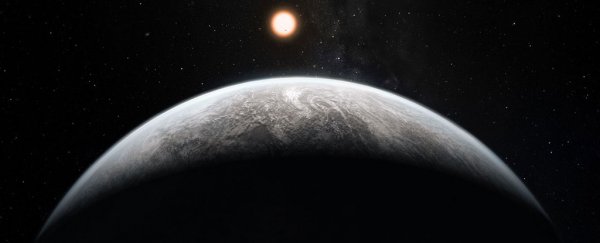For many of us, work experience in high school is a chance to get away from our teachers for a week and get a taste of real working life, but for a group of teens in the UK, it turned out to be a whole lot more than just a break from classes.
A group of students in Staffordshire, England elected to do their work experience at the astrophysics department of Keele University, and while on placement, they managed to discover not just one but two potential exoplanets.
Aged between 15 and 17 years old, the 24 students were split into four groups to examine thousands of 'light curve' readings – measurements of stellar brightness, recorded by NASA's Kepler observatory. As part of Keele's ongoing research, they were specifically looking for rare circumbinary exoplanets – the kinds of Tatooine-style worlds that orbit two stars, much like Luke Skywalker's dusty home planet.
While they didn't find evidence for any circumbinary worlds, one group found what looks to be a strong candidate for an exoplanet orbiting a single star. The Neptune-sized planet appears to have a 19-day orbit around a star very much like our own Sun, and is located some 800 light-years away.
Josh, 15, from Trentham High School, made the initial discovery while analysing the light curve data.
"It's been a fun week, and I've met new people, and you'd never do this anywhere else," he said. "And because the information is all public, if I want to, I can now go home and do more research myself, and learn more."
As Josh's team wrote up the details of their find for presentation to the other students, one of the other groups identified a second likely exoplanet, of a similar size and orbit as the first discovery.
"We think this is probably another exoplanet candidate," said researcher Rob Jeffries from Keele's Astrophysics Group, who will now follow up on the research the students started. "And it's remarkably similar to the first one we found. This one's got an orbital period of about 18 days, and is also about the size of Neptune."
It's not the first time the university's work experience program has produced such awesome results. A year ago, scientists confirmed that a hot Jupiter identified by 15-year-old student, Tom Wagg, was a legit exoplanet.
Wagg noticed the planet, located 1,000 light-years from Earth, when he detected its brightness dip slightly as another planet passed in front of it, analysing data from the Wide Angle Search for Planets (WASP) survey.
"I'm hugely excited to have a found a new planet and I'm very impressed that we can find them so far away," Wagg said last year, when the confirmation was announced.
All we can say is it's amazing to see students get so hands-on with searching for exoplanets at their work experience placements – it certainly beats fetching coffee and topping up the office printer's toner.
If you're interested in this kind of research yourself, it's worth asking at any local universities to see if they offer similar work placements for high school students. Happy hunting!
We're live at the Lennard-Jones building, where a group of work experience students have potentially discovered a new planet!
Posted by Keele University on Thursday, June 30, 2016
Top image: An exoplanet discovered by the K2 mission. Credit: ESO/M. Kornmesser/Nick Risinger/L. Calcada
